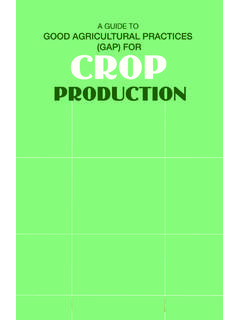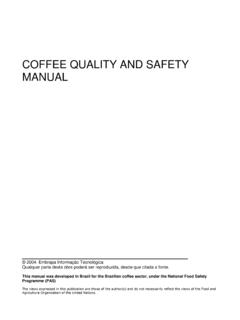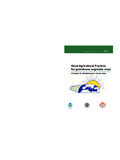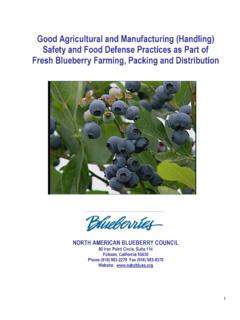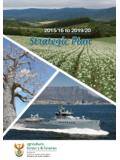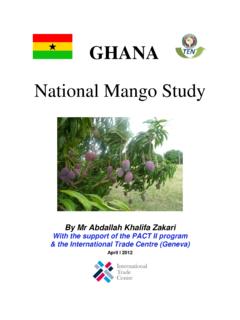Transcription of Guidelines “Good Agricultural Practices
1 Guidelines good Agricultural Practices for Family Agriculture . Departmental Program on Food and Nutritional Security, Antioquia, Colombia, Project TCP/3101/COL UTF/COL/027/COL. Guidelines good Agricultural Practices for Family Agriculture . Authors Preparation and edition of technical material: - Juan Izquierdo, Senior Plant Production Officer. FAO, Latin America and the Caribbean - Marcos Rodriguez Fazzone, GAP Consultant, FAO, Latin America and the Caribbean - Marcela Duran, FAO Volunteer Programme. FAO, Latin America and the Caribbean. Drawings and diagramming were under: - Marcia Miranda M. Graphic Designer - Marcelo Carrillo S. The designations employed and the presentation of material in this information product do not imply the expression of any opinion whatsoever on the part of the Food and Agriculture Organization of the United Nations concerning legal or Acknowledgement to comments and suggestions coming development status of any country, territory, city or area or of its authorities, or from: concerning the delimitation of its frontiers or boundaries.
2 - TCP/COL/3101/COL and UTF/COL/027/COL project teams ISBN 978-92-5-105757-5. - Maria Teresa Oyarzun, FAO Consultant, Latin America and the Caribbean All rights reserved. Reproduction and dissemination of material contained in this information product for educational or other non-commercial purposes are authorized without any prior written permission from the copyright holders provided the source is fully acknowledged. Reproduction of material in this information product for resale or other commercial purposes is prohibited without written permission of the copyright holders. Applications for such permission should be addressed to Chief Electronic Publishing Policy and Support Branch Information Division FAO, Viale delle Termedi Pag Caracalla, 00153 Rome, Italy, Or by e-mail to: FAO 2007. Introduction This manual has been prepared by the Group on Agriculture of the FAO Regional Office for Latin America and the Caribbean.
3 The purpose of this work is to spread the basic concepts of good Agricultural Practices (GAP). in order to: guide the production systems towards a sustainable agriculture and ecologically safe, obtain harmless products of higher quality, contribute to food security generating income through the access to markets and improve working conditions of producers and their families. The manual addresses Agricultural technicians and extension workers, producer organizations, rural school teachers, children, urban and peri- urban citizens and Family Agriculture groups in general. 1. Pag ndex I. What are good Agricultural Practices ? Concept Who benefit from the GAPs? Diagram: What do the GAPs foster? II. Why should I use good Agricultural Practices ? Advantages and benefits versus problems and risks by non application of GAPs III. How should good Agricultural Practices be implemented? 1.
4 How can working conditions be improved and those of male and female workers? What services must be assured for male and female workers? What services must be assured for workers? 2. Which is the best place to sow? 3. How must the soil be prepared? 4. How can crops be handled? 5. How can water be used and manager? How must water and irrigation be used? Water for the family and workers 6. How must agro-chemicals be used? What agro-chemical should I use? What elements should I use to protect myself? How should I apply agro-chemicals? How and where should I keep agro-chemicals? What must I do with the empty containers? Pag 2. 7. What fertilizer should I use and in what quantity? How must I apply fertilizers? How and where should I keep fertilizers? 8. How should organic manure be used? What type of manure should I apply and how should I do it? Where should I prepare organic manure?
5 9. Animals in the field. Work animals Production animals Domestic animals (dogs, cats, others). 10. Which is the best way of harvesting? In what conditions should the workers doing the harvesting be? 11. How must the transport of food be done? 12. What must be taken into account at the moment of selling the product? 13. What information must I register to have a better control of the product? 14. How does the buyer know that my product was processed with GAPs? 3. Pag I. What are good Agricultural Practices ? Concept Who benefit from the GAPs? Farmers and their families that will obtain Consumers are ever more concerned about healthy and good quality food to assure their obtaining safe food and produced caring nutrition and nourishment, generating a value about environment and worker wellbeing. added in their products to access markets in a better way. good Agricultural Practices are born in this context and can be simply defined as Doing Consumers, that will enjoy better and safe things well and guaranteeing it has been quality food, with sustainable production.
6 Done so The population in general, that will benefit GAPs and GMPs ( good Manufacturing from a better environment. Practices ) are a set of principles, regulations and technical recommendations applicable to production, processing and food transport, addressing human health care, environment protection and improvement of worker conditions and their families. Pag 4. What do the GAPs foster? Security for - No contamination of People Environment water and soils - Improve worker - Rational handling of and consumer agro-chemicals conditions - Concern about - Enhance the Biodiversity Agricultural Family wellfare - Improve food security Animal Wellfare Food Safety - Healthy food, not contaminated and of higher quality to improve - Animal care nutrition and food consumption 5. - Adequate feeding Pag II. Why should I use good Agricultural Practices ? WITH BPA WITHOUT BPA. Healthy and good quality products to improve nutrition Products in bad conditions and nourishment and/or contaminated of the family.
7 Affecting family health Healthy Sick workers workers Children attend school Children do not give priority to school attendance and spend Sustainability and access to energies doing farming work new markets High quality (differentiated product). Pag 6. Loss of markets and rejectedproducts. Low quality product WITH BPA WITHOUT BPA. Animals are tired Contaminated field Animal welfare Latrine and Clean field infrastructure in bad Toilets and conditions deposits Confusion and Control of disregard production More income Less income Better prices for quality Lower prices 7. Lower costs ($) (-agro-chemicals) Higher costs ($) (+agro-chemicals). Pag Higher yields (Productivity) Lower yields III. How should good Agricultural Practices be implemented? 1. How can working conditions be improved and those of male and female workers? - All workers should be registered in the social security system - All workers will be trained, especially in agro- chemicals/fertilizer management, hygiene and first aid.
8 - Priority of children is to attend school and 40. they may only help in the field in activities Pag 8. which do not attempt against their security and times to study. What services must be assured for male and female workers? - First aid kit - Emergency phones (fire brigade, police, hospitals) - Make a checkup for you and your family and request health certificates from workers to be recruited. - Participate in health sessions carried out by the hospital or health centers of your community - Weight and height of your children should be analyzed to see if they are well fed. - Personal protection equipment, 9. above all for the application of Pag - In order to improve nourishment, nutrition and health of your for the application of agro-chemicals family, use healthy products in daily meals What services must be assured for workers? - Workers should count with personal protection equipment, especially for the application of chemical products, and also a first aid kit.
9 - There should be enough number of fixed or mobile toilets for all workers. - Toilets should be kept clean, in good conditions, ventilated and doors should close well. Pag 10. - Toilets should have: trush can, toilet paper, washbasin, potable water, soap, towels. - If bins or water tanks are used for hygiene, remember: - Containers should be kept clean on the inside and outside. - Water must be cold, clean, without odors and not allowed to stagnate. - Keep them under shade. Hygiene measures: - Keep good personal cleanliness - Consider the posters use the toilets and wash your hands . - Remember to wash your hands after using the toilets. 43. - When you have an infectious disease or with 11. symptoms (diarrhea, vomits, etc.) fresh food Pag should not be manipulated. 2. GAP in crops Which is the best place to plant? 1st year 2nd year 3rd year - Know the history of the field - Recognize more fertile lands and with availability of water 12.
10 Pag 7. - Do not plant in fields with chemical contaminants - The field should be free of trash, papers, plastics and empty containers. - Check there is no risk of water contamination 13. Pag 8. - Be acquainted with the type of pests, diseases and weeds that exist, mainly in the crop area. - Check on possible contamination sources from neighboring plots. Pag 14. - Signpost the place where the crop will be planted with the number of the lot or name of the crop. Pag 15. - For all these activities consult with the technician that you trust. 3. How must the soil be prepared? - With the support of the technician analyze the type of soil and its depth for good growth of the roots. - Consider the slope of the field where the planting will be done. Pag 16. 11. - Perform the minimum possible tilling. - Avoid soil erosion and compression. 17. Pag 12. 1st year 2nd year 3rd year - Practice crop rotation Pag 18.










